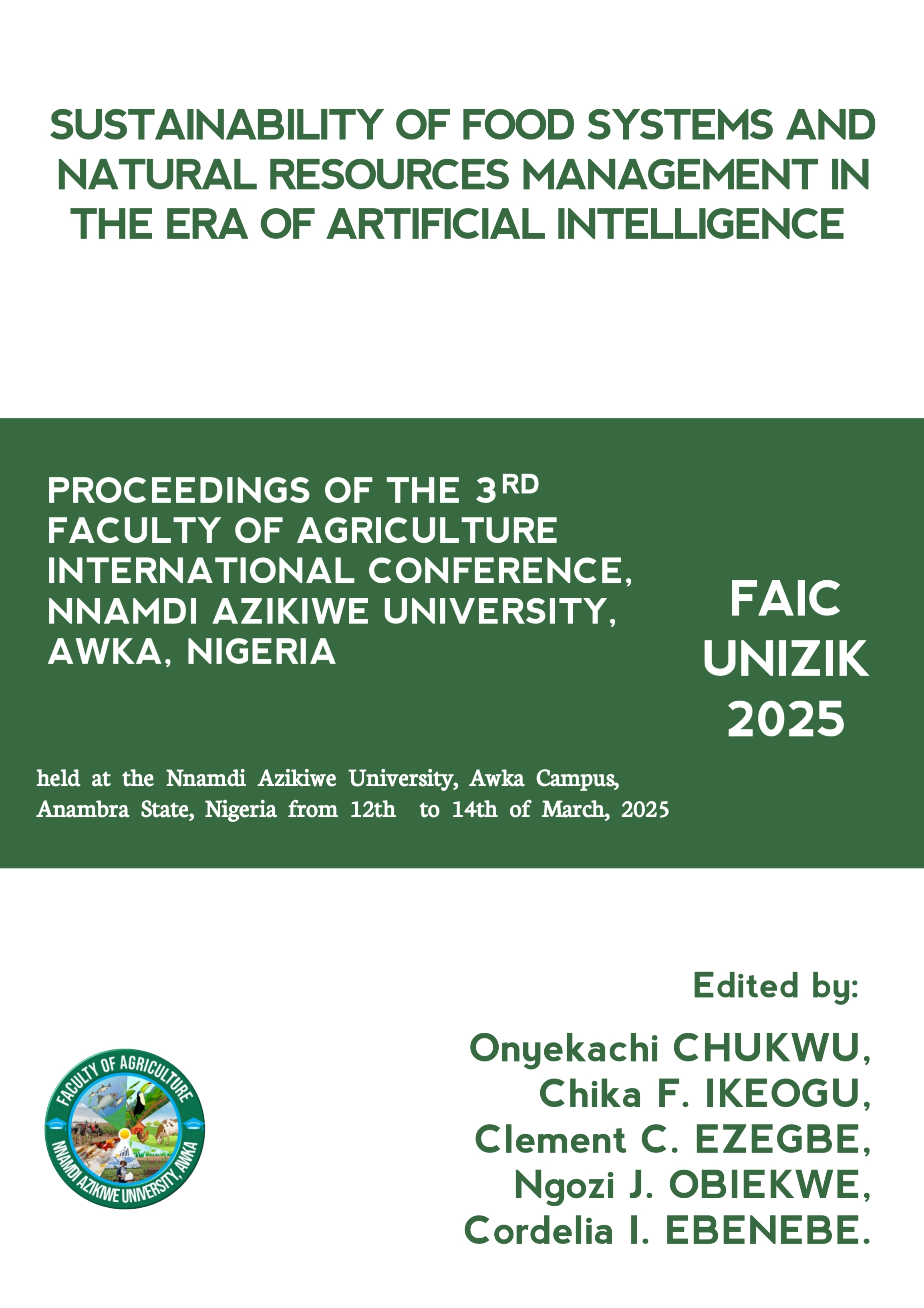Residual Effects of Selected Organic Mulches on Soil Physico-chemical Properties and Yellow Pepper (Capsicum chinese) Yield in Awka, South-Eastern Nigeria
DOI:
https://doi.org/10.5281/gbsth546Abstract
A study on the residual effects of selected organic mulches on soil physico-chemical properties and yield of yellow pepper (Capsicum chinese) was conducted in the Department of Soil Science and Land Resources Management (LRM) Research farm, Nnamdi Azikiwe University, Awka. Oil palm fiber (OPF), rice husks and neem leaves (Azadirachta indica A. Juss.) were used as mulching materials and the residual effects were evaluated on the second year. The experiment was laid out in Randomized Complete Block Design (RCBD) with five replications. Data collected were subjected to Analysis of Variance (ANOVA) and means were separated using Least Significant Difference at 5% level of probability. The physical properties of the plots mulched with oil palm fiber had the least value for moisture content (22.98), hydraulic conductivity (14.4) and total porosity (49.54) among the mulched plots, while the least value for bulk density was found in soils mulched with Neem leaves (1.30). The soil mulched with neem leaves tended towards neutrality (pH = 6.2) compared to the others; had the highest values for available phosphorus (24.14), nitrogen (0.33), calcium (9.02), magnesium (4.46), effective cation exchange capacity (15.7) and base saturation (93.59) and the least values for aluminum (0.32) and hydrogen (0.64), which are indicators of a healthy and productive soil. The plots mulched with rice husk produced the highest value (2.2kg/2m) on yield among the mulched plots. Among the organic mulches tested in this work, neem leaves and rice husk proved to be better for the production of yellow pepper.





